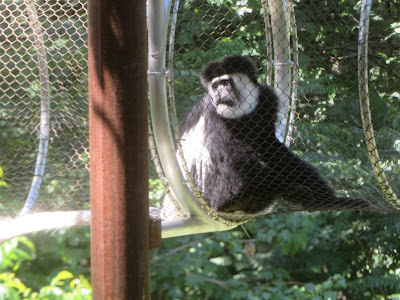AFRICAN JOURNEY
What's closed: A pathway short cut to the Chimpanzee Forest, the Giraffe/Okapi Round House, and the new African Elephant overlook.
Caribbean Flamingo (Phoenicopterus ruber)
Southern White Rhinoceros (Ceratotherium simum simum)
AFRICAN AVIARY
Hamerkop (Scopus umbretta)
Von der Decken's Hornbill (Tockus deckeni)
Blue-bellied Roller (Coracias cyanogaster)
The Amur Leopard habitat is being completely renovated. I hope it is in preparation to introducing a male Amur Leopard with our Sofiya and then little ones--this is one of the most critically endangered animals on the planet.
Amur Leopard habitat under renovation.
Saddle-billed Stork (Ephippiorhynchus senegalensis)
Addra Gazelle (Nanger dama)
Cheetah (Acinonyx jubatus)
ZURI
African Lion (Panthera leo)
HASSAN
FELIX
African Elephant (Loxodonta africana)
ANNA
Reticulated Giraffe (Giraffa Camelopardalis reticulata)
Black and White Colobus Monkey (Colobus guereza)
Panamanian Golden Frog (Atelopus zeteki)
The Panamanian Golden Frog is extinct in the wild. Herpetologists at the Maryland Zoo were the first to successfully breed this species in captivity. Today a network of zoos are working hard to keep this beautiful little creature from vanishing from the face of the earth forever. All are indebted to the work begun at the Maryland Zoo--I am very proud of this.
Located in the Chimpanzee Forest building, across from this large Herpetarium is the inner Chimp Habitat. The majority of the troup were present, and both of our little newborn girls were clinging to the mothers as the group members were swinging through the rafters! It was so fun seeing them integrated into the group. But getting a pic was next to impossible!
Chimpanzee (Pan troglodytes)






















































